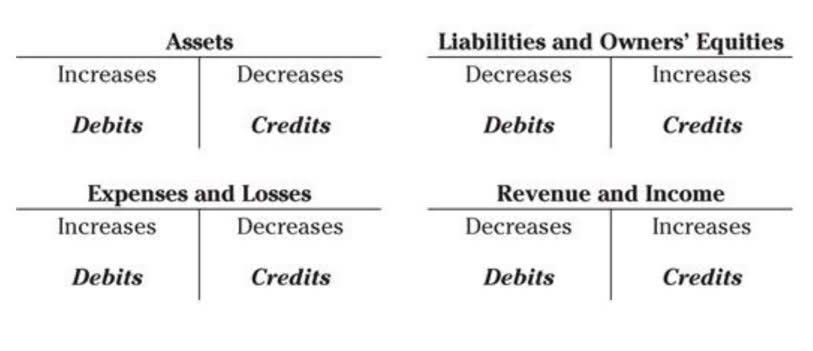How to Prepare an Indirect Method Statement of Cash Flows for a Nonprofit

Cash inflows for a nonprofit come from contirbutions of cash, checks, fundraising efforts, and grants. On the other hand, they share how these funds support students throughout their education. The scholarship foundation’s details fit well with what donors expect to hear from the organization. Wellington Zoo also shares further details for each financial statement to explain who is reporting these facts and how they comply with accepted standards. Investing expenses are the purchases of long-term investments and any payments on long-term investments like buildings, land, equipment, etc. The below glimpse is taken from the same financial report of the Code for Science & Society that we shared earlier.

Be proactive about building cash reserves
If what you do is unpredictable (as in the disaster relief agency), you will need cash available to deploy at a moment’s notice. Stay engaged with emerging tools and technologies that facilitate more efficient financial operations and provide deeper insights into financial health. Regularly attending workshops, seminars, and conferences on nonprofit financial management will also help keep your knowledge current and relevant. Your nonprofit leverages (or should leverage) a number of financial statements to maintain consistent visibility into the financial health of the organization and to make decisions that will help prevent misallocation.

Analysis of income and funding
Additionally, the statement of cash flows is used by for-profit and nonprofit organizations alike, all of which refer to it using similar terminology (statement of cash flows, cash flow statement, or cash flow report). Similarly to other financial statements, it summarizes the data stored in your organization’s accounting system so it’s easier to interpret. Most nonprofits compile this report on a monthly basis, since it helps keep their spending and revenue generation aligned with their annual operating budgets. Thankfully, using cash flow forecasts can be an effective way to avoid unexpected cash shortages. Most organizations build cash flow projections for the 12 months ahead, separated by month.
Great Examples of Nonprofit Financial Statements
In 2019, research found nonprofits that were transparent about their expenditure received more contributions and were stronger organizations than those that didn’t. As any organization leader or major gift officer who has found themselves in this situation will likely tell you, this withholding of information is usually the result of a deep-seated fear. There’s a concern that major backers will withdraw support if they knew the truth about operational costs. In 2018, 62% of respondents to the annual State of the Sector survey said that financial sustainability remains a top challenge. The root causes of such challenges are often issues scarcely seen in the for-profit business world.
Keys to improving cash flow management for nonprofit organizations
As we mentioned earlier, many nonprofits use these financial statements in their annual reports to show transparency and build trust in their organization. Financial statements also help nonprofits determine the future of their organization. It also allows leadership to find potential financial opportunities and ways to address financial concerns.

The Importance of Cash Flow Forecasts for Nonprofits
For instance, if you sold a lawn mower for $75 and its value was $100, there was a loss of $25, which is listed on the income statement. However, this is not a cash outflow, so the value of the loss will be added back to net income. With a solid cash reserve to draw upon and better timing of both outgoing and incoming payments, you ultimately free up your time, your resources and your energy to focus more on doing that all-important good work. One reason for this is that some nonprofits attempt to build up a large sum of cash before transferring it to a reserve fund, only for it to be inevitably devoured by operational costs.
Team members working on earned income projects can estimate billing and collections. Ultimately, all of this information should flow to the CFO to project and plan for any potential shortfalls (or, in the happy event of significantly more cash than necessary, nonprofit cash flow statement to park it in safe short-term investments). Staff across the organization may also be asked to help manage challenges as well—perhaps by rethinking timing of certain expenses or working on accelerating collection of cash from donors or customers.
- Investments and their returns often create relatively small cash flows compared to your nonprofit’s other revenue streams, while changes in fixed assets are typically large but infrequent.
- Regular engagement with this statement can prevent financial surprises, support sustained operational success, and ultimately lead to more effective fulfillment of the nonprofit’s mission.
- The financing activities section of the SCF reports the amounts received from borrowings and also any repayments.
- A cash flow statement is a financial document that details the inflows and outflows of cash for a company over a specific period of time.
- A cash flow forecast is a projection of the cash you expect to have coming in and going out in the future.
- Including supplemental information such as cash paid for interest and taxes, along with significant non-cash investing and financing activities, enhances the transparency and completeness of the cash flow statement.
- Or, perhaps consider how sharing the secrets to your organization’s success can generate additional income.
For example, an organization that generates a significant portion of its income from an annual gala-type fundraiser may have an event in spring whose receipts may have to carry it much of the way until the next spring. Another may see much of its cash come in from an annual campaign timed to take advantage of end-of-year holiday (and tax write-off) giving. To enhance your understanding and efficiency in managing nonprofit finances, it is valuable to explore a range of educational resources and tools. Here are some recommended books, courses, and software that can provide deeper insights and practical skills in nonprofit financial management. For nonprofit leaders, regular and thorough review of the Statement of Cash Flows is essential.

These funds are donated for specific purposes or times, and their use is restricted by donor stipulations. Financing activities in a nonprofit’s Statement of Cash Flows involve the flows of cash that are related to the funding of the organization beyond its operational revenue. This section highlights how https://www.bookstime.com/ the nonprofit manages its capital structure, including how it secures and repays funds, and how it handles contributions that may have financial implications beyond the current period. Operating activities are the primary revenue-generating functions of a nonprofit and are fundamental to its mission.
0 Komentar